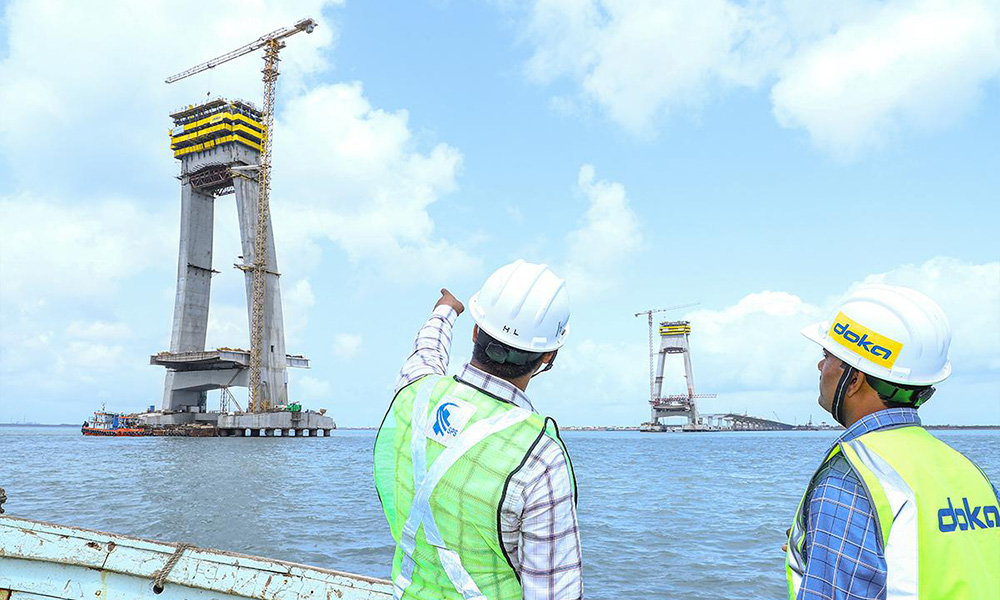Doka completes pylon formwork and engineering for 2.5km cable-stay bridge in India
The firm’s SKE50, SKE100, SKE100 plus, Top 50 and Shaft Platform were used to support the timely execution of the project

Doka India has completed formwork and engineering on the construction of a 900m central cable-stayed bridge in Dwarka, India. The bridge has a total length of 2.5km and will comprise four lanes, measuring 29.6m in width. The project’s scope also includes 3.5km of retaining walls and 1.42km of approach on each side.
According to Doka, the bridge features the largest span of any cable-stayed bridge in India, with a total length of 500m between the two pylons. The structure is supported by 76 cables, and the most challenging aspect of the endeavour was said to be designing the curved pylons, which are inclined at 20.1 degrees at the centre, 22.6 degrees to the left, and 19 degrees to the right.
The firm noted that the bridge required a bespoke and complex formwork solution to meet the specific engineering requirements of the completed structure. Yogesh Patil, Doka India Group Leader Engineering, and Pramendra Singh, Doka India Project Engineer tackled the project, the firm stated.

In addition, the Doka Formwork Instructor team, comprising Ash Narayan Singh and Bijaya Kumar Swain, developed a solution that fulfilled the project’s requirements and conducted on-site training for other stakeholders, ensuring a safe and efficient construction process, the statement explained.
As part of the project’s product solution, Doka’s SKE50, SKE100, SKE100 plus, Top 50 and Shaft Platform were used throughout in order to support the timely execution.
“While several of our core products were used in the construction process, our key asset, particularly when it came to the pylons was our Automatic climbing formwork SKE plus. Designed to be completely crane-independent, and fully modular, we were able to work around the unique and complex shape of the pylon, while remaining protected both from the weather and height. As a fully hydraulic system, it also meant that a lot of time could be saved during repositioning,” concluded Singh.
























